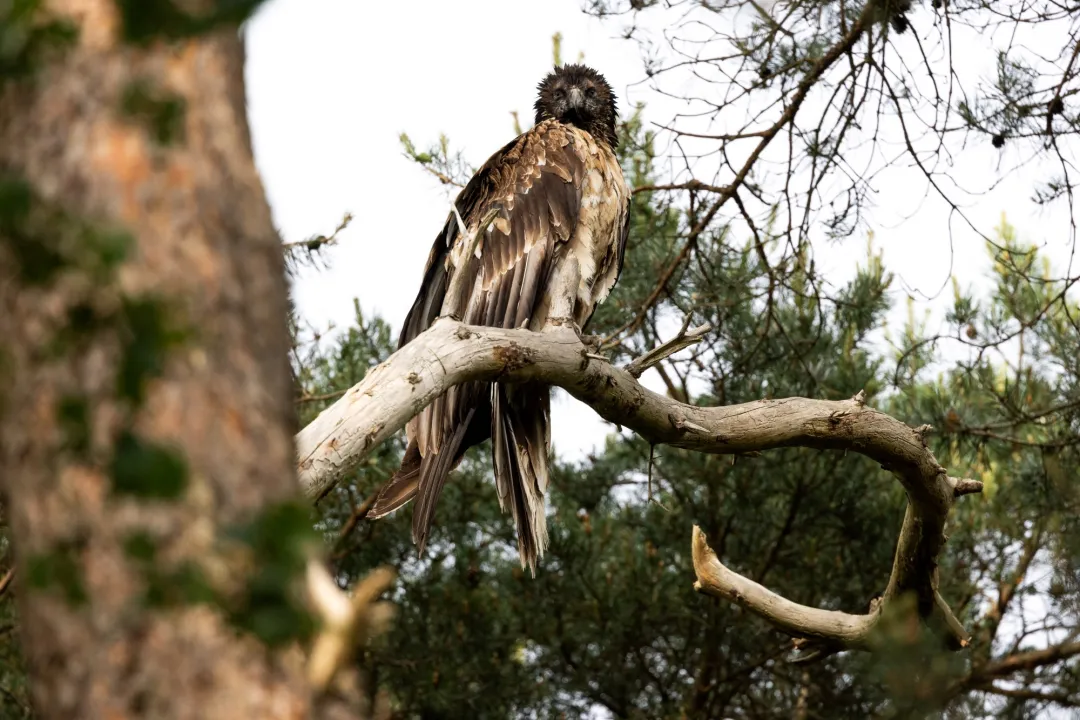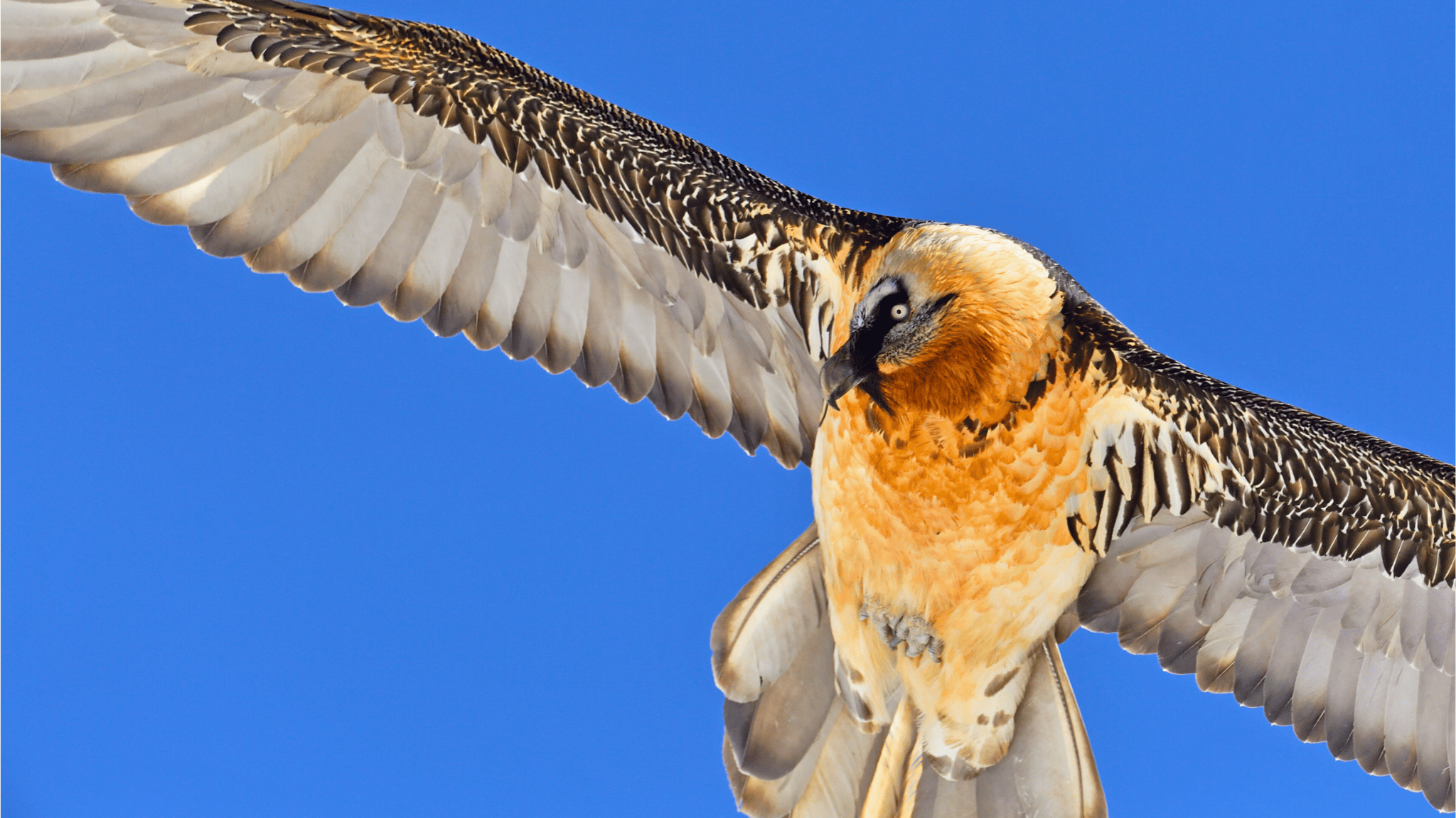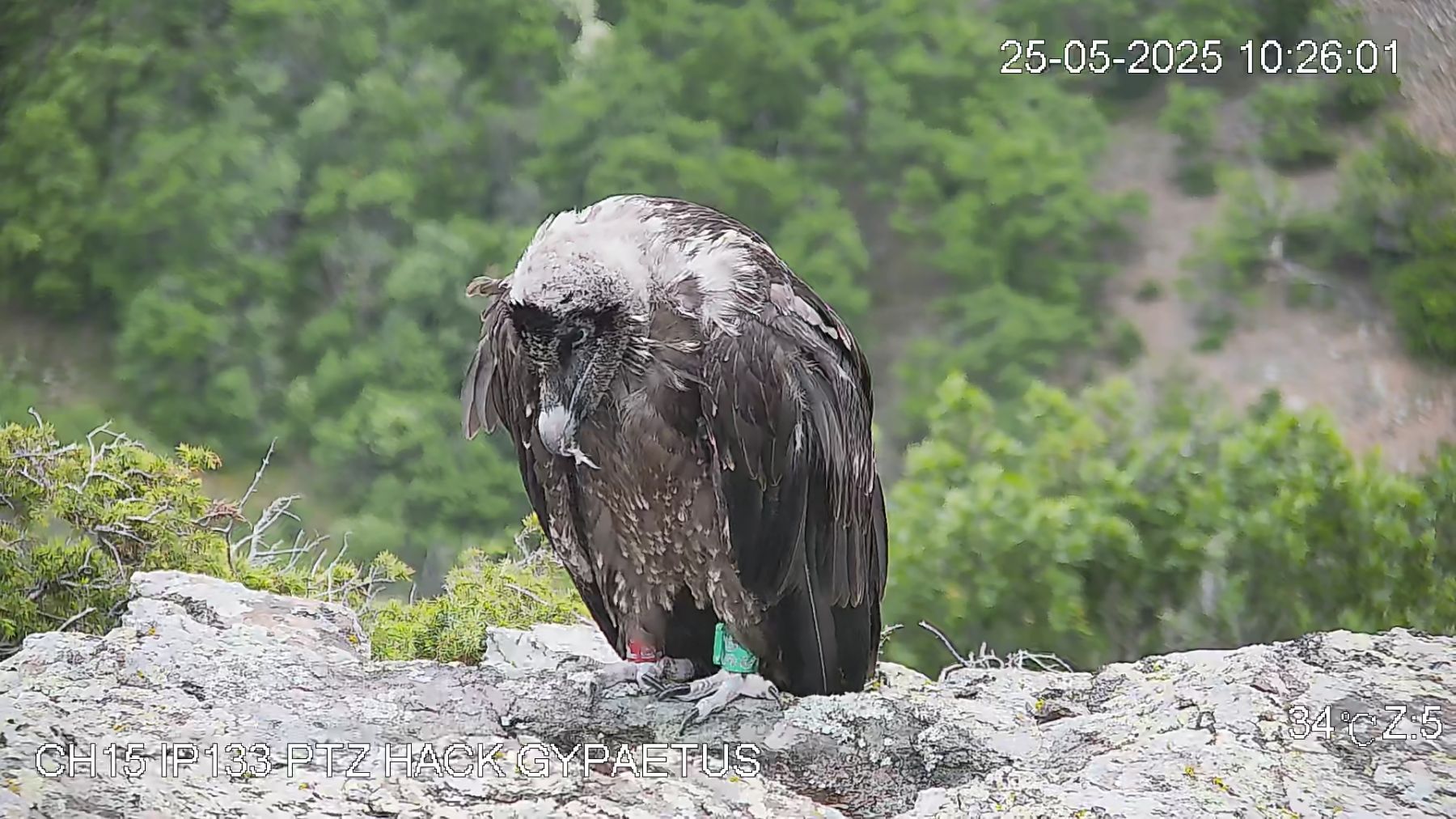The 2024-2025 breeding season has begun with an exciting twist for the Bearded Vulture (Gypaetus barbatus) community. On 4 December 2024, two Bearded Vulture EEP captive breeding centres—Richard Faust Zentrum (RFZ) in Austria and Guadalentín in Spain—both confirmed the arrival of their first eggs of the season, laid on the same day.
Both RFZ and Guadalentin share a history of successful breeding and along with the Vallcalent Captive Breeding Unit, are the most important captive breeding centres within the Bearded Vulture EEP network.

The story of Aararat and Ricarda
At RFZ, the first egg of the season was laid by the pair of BG201 “Aararat” and BG576 “Ricarda”. This egg was laid around 1:30 in the morning. Aararat is a wild-caught bird from Tajikistan and has been part of the EEP programme since the early 1990s, after being captured in 1988 due to a wing-injury that kept him from being released back in the wild.
Despite his old age, Aararat only fathered seven offspring so far, including “Gerlinde,” a successful wild breeder in Vercors. As a wild founder, all offspring from him are genetically very valuable, contributing to the European population.

The female, “Ricarda”—hatched in captivity. She hatched at RFZ in 2009 and spent 2011-2023 at Frankfurt Zoo, where she struggled to produce viable offspring. After her male partner passed away in 2022, she was transferred back to RFZ in May 2023, where she then paired with BG201. This pair’s journey has included moments of uncertainty, such as a fight in mid-November when BG576 chased BG201 because of being wet, prompting an intervention from caretakers. Thankfully, the pair reunited and successfully mated.
The arrival of Keno’s egg
Meanwhile, the Guadalentin Breeding Centre reported their egg being laid at around 1 p.m. on the same day by Josef and Keno. They are a beautiful and very close couple. The female Keno is 25 years old and experienced and great mother. She laid two eggs last year, resulting in BG1202 “Terre” that was released in Grands Causses on 16 May 2024 as part of the LIFE GypACT project and BG1206 that was transferred at the FCQ´s centre in La Alfranca, Zaragoza at 10 days old.
The male Josef is 34 years old and is the second oldest bird at the Guadalentín centre. Josef is not a very good parent. He does not know what to do with a chick, so he is removed from the cage when the pair is given a chick to raise. Luckily, Keno does an amazing job by herself.
See the video of the first egg laid by Keno below!
Typical egg-laying
While non-mature Bearded Vultures typically take several years to stabilize their egg-laying dates, gradually moving from February to December, changes in partnerships can reset this process. The observed behaviour of BG576 in RFZ suggests that a new pairing can influence early egg-laying, which is crucial for the birds’ reproductive success. This season’s early start is a reminder of how dynamic and adaptable these birds can be.
The laying interval between eggs generally hovers around seven days, and with an incubation period of about 54 days, the first hatching at both RFZ and Guadalentin is anticipated around late January 2024. With the careful monitoring and support from their keepers, these eggs will be watched closely, and hopes are high that they will yield healthy chicks.
Strengthening Bearded Vulture populations in the wild
The Bearded Vulture EEP, coordinated by the Vulture Conservation Foundation (VCF) on behalf of EAZA, continues to focus on enhancing the genetic diversity and stability of the European population. With a network comprising over 40 institutions, the EEP supports captive breeding that underpins reintroduction projects across Europe.
The 2024-2025 season will mark another step toward strengthening Europe’s Bearded Vulture population, and we look forward to sharing updates as these new hatchlings make their journey from egg to the wild.




